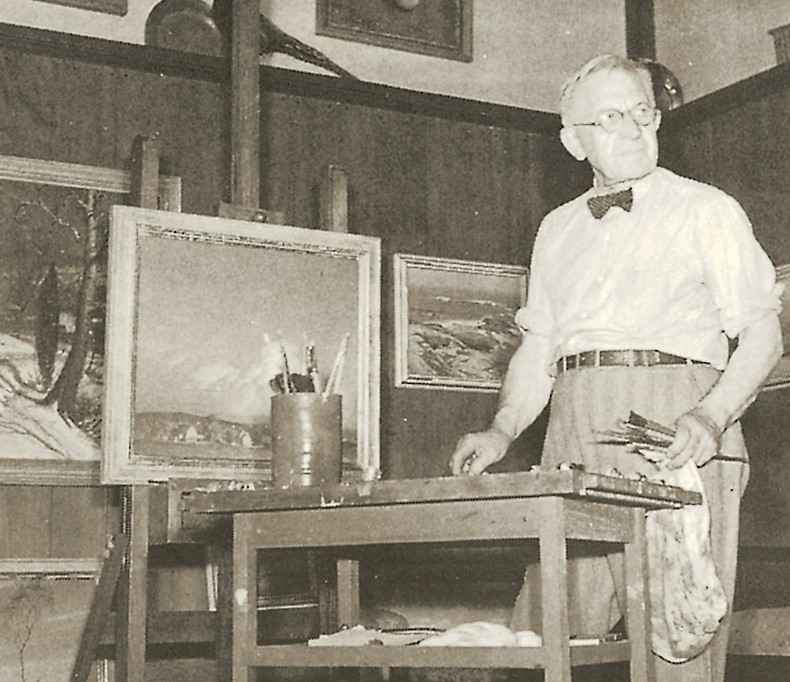George W. Sotter (1879 - 1953) Works

George W. Sotter (1879 - 1953)
George W. Sotter is remembered for painting the scenic towns, farms, mills, and valleys that make Bucks County such a welcoming destination. Great artists leave behind in their art, a legacy. The early twentieth century was filled with talented artists, although, there is only ever a mere few who can deservingly be regarded as “the best of”. Amid the vast field of American Impressionist painters, George Sotter had no equal when painting a nocturne. He possessed the ability to make dark seem light. Most criticisms of nocturne paintings are that they are too dark, seeming dreary and depressing, or hard to read. This is where Sotter shines. He had the ability to turn a cold winter night into a glowing moonlit masterpiece, moonlight illuminates the snow and reflects off the water, stars shine from above, and lighted candles glow in the windows. These pictures are warm and soothing. Another of Sotter’s specialties was his amazing ability to paint clouds. He would fill half of his composition with billowing Luministic clouds, while an entire village is painted with incredible detail below, demonstrating a masterful sense of light.
Sotter was a stained glass artist before he turned to landscape painting, and his stained glass work in particular grew in importance during his life in Bucks County. Sotter discovered Bucks County in 1902. He was given a leave of absence from his job at a Pittsburgh stained glass studio to enroll at the Pennsylvania Academy of the Fine Arts. His employer, Horace Rudy, had earlier attended the Academy and was friends with many important artists, one of whom was Edward Redfield. Rudy had arranged an introduction to Redfield for Sotter, and the younger Sotter persuaded Redfield to give him instruction. This was a rare occurrence as Redfield did not fancy himself a teacher. A lifelong friendship resulted. Sotter returned to Pittsburgh studio after a summer and fall with Redfield. He again studied at the Pennsylvania Academy from 1905 to 1907 with Thomas Anshutz, William Merritt Chase, and Henry Keller. In 1907, he married Alice Bennett, an artist who started working in the Rudy studio in 1904. In 1910, Sotter became an instructor at the Carnegie Institute of Technology’s School of Fine Arts, a position he held until 1919.
Sotter returned to Bucks County in 1919, fulfilling a vow he had reportedly made to Redfield. His friend helped him find the house on Ash Mill Road, in Holicong, where the Sotters lived and operated the Sotter Studio. Although he considered himself a landscape painter at the time, his work with stained glass preceded him. He began taking commissions for stained glass and his work in this medium quickly spread as far as Cleveland, Boston, and New York. Sotter had fifteen craftsmen working with him at one time and his work helped establish Bucks County as a center of stained glass art.
Sotter’s work is in permanent collections of the James A. Michener Art Museum, LaSalle University Art Museum, the New Jersey State Museum, the Pennsylvania State Museum, the Reading Public Museum, and the Woodmere Art Museum. He exhibited extensively throughout his career at many of America’s most prestigious institutions, winning many awards, including the Silver Medal at the Panama-Pacific Exposition in San Francisco in 1915. George Sotter died in Holicong, Bucks County, Pennsylvania in 1953 at the age of seventy-four.
Source: New Hope for American Art by James Alterman

